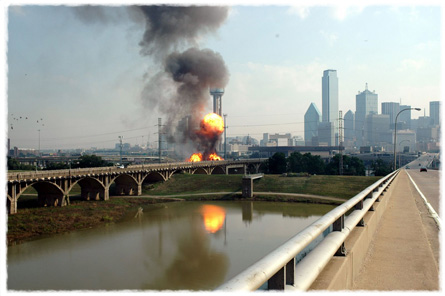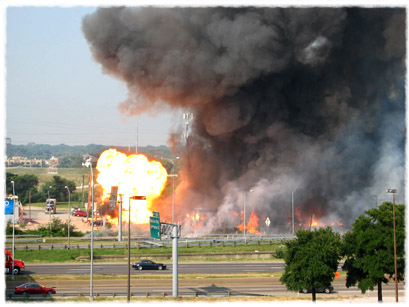• GLOBAL AREAS AT HIGH RISK • Dr. Norman Myers of Oxford University calculated that rising sea levels and the impact of climate changes on agriculture may displace millions of people in developing countries. Deforestation, soil erosion and water shortages could prompt entire populations to migrate. By the year 2050, 1.5% of the global population could find themselves faced with the necessity of massive migrations – in other words, mass evacuations.
CHINA • Rising sea levels would flood all of Shanghai and about 96 percent of the surrounding province, resulting in the displacement of 30 to 72 million people, according to the Chinese government’s calculations.
INDIA • The population projection of coastal India in 2050 is 142 million people. Flood zone refugees alone could be anywhere between 20 million and 60 million.
BANGLADESH • Seven percent of Bangladesh could be entirely submerged by rising sea levels, displacing an estimated 15 million people would be displaced. In September 1988 river flooding left 50 million people left homeless. Global warming may increase river flow substantially due to melting Himalayan glaciers and monsoons, so many climate experts fear that inland flooding may by a greater danger to Bangladesh than coastal flooding.
EGYPT • It’s possible that Egypt could lose between 12 and 15 percent of its arable land to rising sea levels, displacing more than 14 million people. Intrusion of salt water up the Nile would further reduce an already severely limited farmland due to the necessity of relying on irrigation, which supports virtually the entirety of Egypt's agriculture. Egypt already imports more than half of its food.
AFRICA • By 2050, global warming could decrease grain production in developing countries by 9 to 11 percent. Africa may be particularly vulnerable to this agricultural side effect of global warming. Famine could wipe out ore than 50 million people.
DELTA & ISLANDS •
Deltas at risk: Indonesia, Gambia, Thailand, Pakistan,
Mozambique, Senegal and Suriname. Islands at risk: the Maldives, Kiribati, Tuvalu,
the Marshalls plus dozens of Caribbean islands. Around one million people are
likely to have to evacuate permanently.
from:
Greenpeace Climate Impact Database
![]() •
Read full Greenpeace article here •
•
Read full Greenpeace article here •




